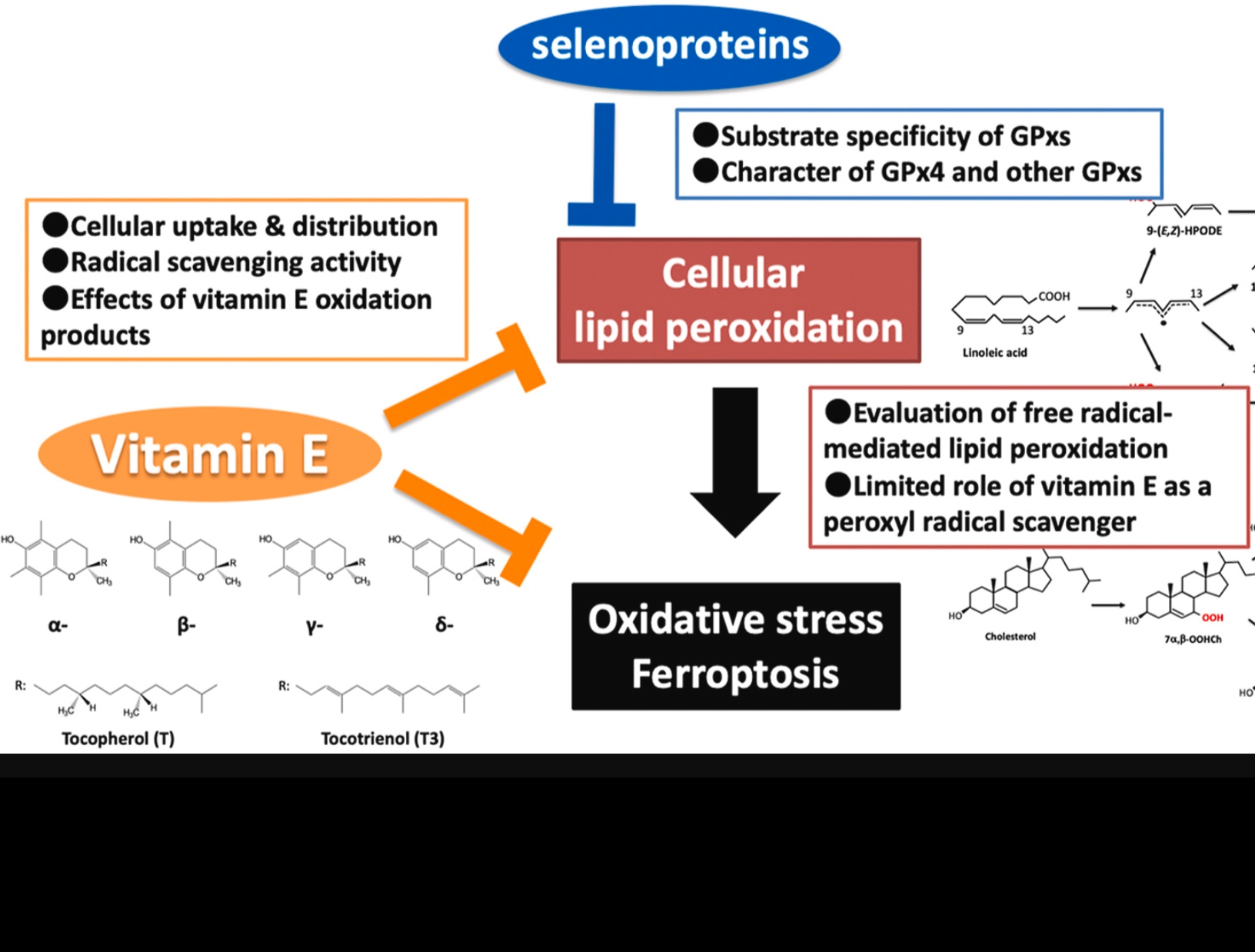Diverse cytoprotective actions of vitamin E isoforms- role as peroxyl radical scavengers and complementary functions with selenoproteins
Yoshiro Saito Free Radical Biology and Medicine Volume 175, 1 November 2021, Pages 121-129
Highlights
• The different cytoprotective actions of vitamin E isoforms against oxidative stress.
• The complementary role of vitamin E and selenoproteins to prevent lipid peroxidation and ferroptosis.
• The limited role of vitamin E as a peroxyl radical scavenger, based on kinetic data and the physiological molar ratio.
Vitamin E, a generic term for tocopherol (T) and tocotrienol (T3), is one of the most potent lipid-soluble antioxidants in the body. It is classified into T and T3 based on the difference in the side chain structure. T and T3 have four isoforms: α-, β-, γ-, and δ, which have different chroman rings. Both T and T3 exhibit a similar ability to scavenge free radicals, and the extent of this ability depends on the difference in the chroman structure. However, they display unique cytoprotective activities in cultured cells depending on the difference in the side chain structure.
The cytoprotective effects of vitamin E have received much attention in the prevention of ferroptosis, which is a distinct form of cell death involving iron-dependent lipid peroxidation. This review focuses on the cytoprotective actions of vitamin E isoforms against oxidative stress, particularly the difference between T and T3 and its relation to cellular uptake and distribution. Moreover, the molecular mechanism for cytoprotection of vitamin E oxidation products is explained, and the complementary role of vitamin E and selenoproteins to prevent lipid peroxidation and ferroptosis is described. Furthermore, the evaluation of vitamin E's radical scavenging activity in vivo using oxidative stress markers is discussed, particularly based on kinetic data and the physiological molar ratio of vitamin E to substrates, and the limited role of vitamin E as a peroxyl radical scavenger is described. The future directions and unresolved issues related to vitamin E and lipid peroxidation are also discussed.














